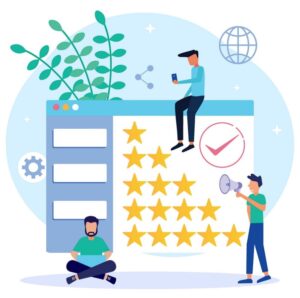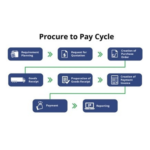For every business cash is the lifeblood and needs to generate enough cash from its activities so that it can meet its expenses. A Lead-to-cash cycle is essential for any business since it helps achieve efficient revenue generation by streamlining the entire sale process from start to finish. Grow Asia makes this end-to-end, top-level business cycle more resilient beginning with marketing and ending with revenue collection. This L2C cycle involves several key stages:
-
Lead Generation:
This is the initial stage where businesses identify and generate potential leads or prospects. Leads can come from various sources such as marketing campaigns, website visitors, social media, trade shows, or referrals.

Lead Generation
-
Lead Qualification:
Not all leads are equal. In this stage, businesses assess the quality and potential of each lead. This typically involves determining whether the lead has a genuine interest in the product or service and whether they meet the criteria of an ideal customer.

Lead Qualification
-
Sales Engagement:
Once a lead is qualified, it is handed over to the sales team. Sales representatives engage with the lead to nurture the relationship, provide information about the product or service, address questions and concerns, and ultimately persuade the lead to make a purchase.

Sales Engagement
-
Quote/Proposal and Negotiation:
In some cases, particularly in B2B (business-to-business) sales, a formal quote or proposal is generated for the lead. This document outlines the terms, pricing, and other details of the sale. Negotiations may occur at this stage as the lead and the sales team work out the specifics.
 Quote/Proposal and Negotiation
Quote/Proposal and Negotiation
-
Closing the Deal:
This is the stage where the lead commits to making a purchase. It involves signing contracts or agreements, making payments, and formalizing the sale.

Closing the Deal
-
Order Fulfillment:
After the deal is closed, the business must fulfill the order. This could involve delivering a product, providing a service, or making the necessary arrangements based on the nature of the sale.

Order Fulfillment
-
Invoicing and Payment:
In this stage, the business issues an invoice to the customer, specifying the amount due and payment terms. Once the customer pays, the revenue is captured.

Invoicing and Payment
-
Customer Relationship Management (CRM):
Maintaining a good relationship with the customer is crucial for future sales and customer retention. This stage involves post-sale support, addressing customer inquiries, and ensuring a positive customer experience.

Customer Relationship Management (CRM)
-
Revenue Recognition:
This is an accounting process where the revenue generated from the sale is recognized on the company’s financial statements. The timing of revenue recognition can vary based on accounting standards and the nature of the transaction.

Revenue Recognition
-
Analytics and Feedback:
Throughout the lead to cash cycle, data is collected and analyzed to improve the process. This includes tracking conversion rates, customer feedback, and other key performance indicators to identify areas for optimization.

Analytics and Feedback
Conclusion
Lead-to-Cash cycle is a comprehensive business process that encompasses the entire customer acquisition and revenue generation journey within an organization. A well-implemented process can optimize a business’s operations, enhance customer satisfaction, and contribute to the overall growth and profitability of the company.
Send us an email on info@growasia.sg – we can help you work through this process.






